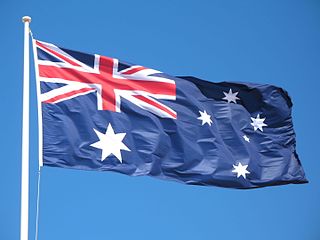 W
WAustraliana includes the items, people, places, flora, fauna and events of Australian origins. Anything pertaining to Australian culture, society, geography and ecology can fall under the term Australiana, especially if it is endemic to Australia. Australiana often borrows from Australian Aboriginal culture, or the stereotypical Australian culture of the early 1900s.
 W
WAutograph collecting is the practice of collecting autographs of famous persons. Some of the most popular categories of autograph subjects are presidents, military soldiers, athletes, movie stars, artists, social and religious leaders, scientists, astronauts, and authors.
 W
WThe Book of Shadows, or simply the Book, is a book of witchcraft from the TV series Charmed. In the beginning, the book was created by Melinda Warren and was passed down the family to the Charmed Ones. This book contains spells, incantations, potions and information of the evil beings that their ancestors have once faced. They first find out that they were witches when Phoebe finds the Book of Shadows in their attic, at midnight on a full moon, and reads an incantation aloud. The Book of Shadows is enchanted. It can protect itself from any evil being who dares to touch it.
 W
WBric-à-brac or bric-a-brac, first used in the Victorian era, refers to lesser objets d'art forming collections of curios, such as elaborately decorated teacups and small vases, compositions of feathers or wax flowers under glass domes, decorated eggshells, porcelain figurines, painted miniatures or photographs in stand-up frames, and so on.
 W
WDevotional objects are religious souvenirs, owned and carried by the faithful, who see them as imbued with spiritual values, and use them for votive offering. Production and sales of devotional articles have become a widespread industry in the vicinity of various religious sites all over the world.
 W
WDisneyana is a term for a wide variety of collectible toys, books, animation cels, theme-park souvenirs, ephemera and other items produced and/or licensed by The Walt Disney Company. Examples range from products featuring virtually every Disney character—such as Mickey Mouse, Tinker Bell and others—to vintage stock certificates and company checks bearing the signature of Walt Disney.
 W
WThe Disneyana Fan Club or DFC was founded in 1984 as a non-profit organization dedicated to the preservation and dissemination of Walt Disney's legacy. Its published aim is to provide Disneyana enthusiasts worldwide with news, information, and events designed to enhance their "experience with, and love of, all things Disney." The club has twenty-five chapters in the United States, Canada, Japan and Australia. Disneyana has held an annual convention since the early 1990s which pre-dates collector events produced by the Disney company by over a decade.
 W
WA drop top guest book is an alternative to the traditional guest book used at events such as weddings, birthday parties, and baby showers. Instead of guests signing their names on a sheet of paper or in a booklet, they sign an item that is to be inserted, or dropped, into a shadow box frame. The pieces that are typically signed on and dropped into frame are wooden and come in various shapes, with hearts being the most common.
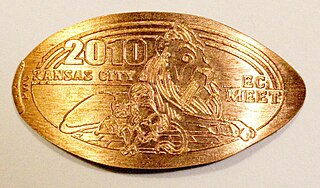 W
WAn elongated coin is one that has been flattened or stretched, and embossed with a new design. Such coins are often used as commemorative or souvenir tokens, and it is common to find coin elongation machines in tourism hubs, such as museums, amusement parks, and natural or man-made landmarks.
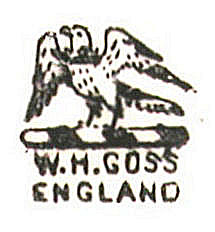 W
WGoss crested china is typically in the form of small white glazed porcelain models, made from 1858 to 1939, carrying the coat of arms of the place where they were sold as a souvenir, thus being a form of model heraldic china.
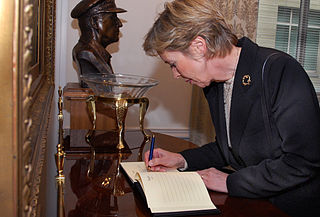 W
WA guestbook is a paper or electronic means for a visitor to acknowledge a visit to a site, physical or web-based, and leave details such as their name, postal or electronic address and any comments. Such paper-based ledgers or books are traditional in churches, at weddings, funerals, B&Bs, museums, schools, institutions and other private facilities open to the public. Some private homes keep visitors' books. Specialised forms of guestbooks include hotel registers, wherein guests are required to provide their contact information, and Books of Condolence, which are used at funeral homes and more generally after notable public deaths, such as the death of a monarch or president, or after a public disaster, such as an airplane crash.
 W
W"Jew with a coin", "little Jews", or "lucky Jew" are antisemitic stereotype images or figurines of a Jewish man holding a coin, usually accompanied by a proverb. The motif was first described in articles from 2000, and probably dates back to after the 1989 transition of Polish government. As of the early 21st century, they are found in shops and homes in Poland. According to a 2015 survey, 65% of respondents recognized the motif, 55% saw an item with the motif at the home of a family member or friend, and 18% of respondents had one themselves.
 W
WA jugate consists of two portraits side by side to suggest, to the viewer, the closeness of each to the other. The word comes from the Latin, jugatus, meaning joined.
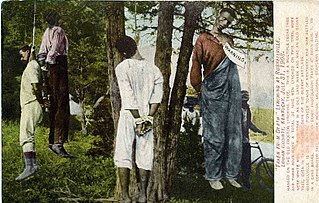 W
WA lynching postcard is a postcard bearing the photograph of a lynching—a vigilante murder usually motivated by racial hatred—intended to be distributed, collected, or kept as a souvenir. Often a lynching postcard would be inscribed with racist text or poems. Lynching postcards were in widespread production for more than fifty years in the United States; although their distribution through the United States Postal Service was banned in 1908.
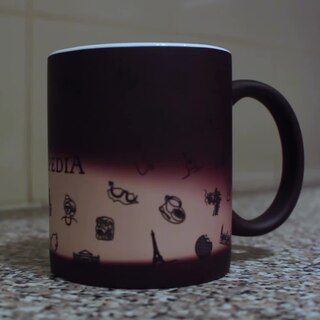 W
WA magic mug, also known as a heat changing mug, is a mug that changes colour when it is filled with a hot liquid. This effect is created by using thermochromic ink.
 W
WNazi memorabilia are items produced during the height of Nazism in Germany, particularly the years 1933 to 1945. Nazi memorabilia includes attachments featuring the Flag of Nazi Germany, items with Nazi symbolism such as SS-Ehrendolch, Nazi medals, and contemporary editions of Adolf Hitler's Mein Kampf. During World War II, soldiers from opposing Allied forces often took small items from fallen enemies as war trophies. These and other items from this time period have since been acquired by museums and individual collectors.
 W
WPetroliana is a category of collectibles that is related to gas stations or the petroleum industry. Petroliana memorabilia include items such as old gas pumps, fuel advertisements, enamel or tin signs, oil cans and tins, and road maps.
 W
WA programme or program is a booklet available for patrons attending a live event such as theatre performances, fêtes, sports events, etc. It is a printed leaflet outlining the parts of the event scheduled to take place, principal performers and background information. In the case of theatrical performances, the term playbill is also used. It may be provided free of charge by the event organisers or a charge may be levied.
 W
WRailroadiana or railwayana refers to artifacts of currently or formerly operating railways around the world. Railroadiana can include items such as:Brakeman's or marker lanterns Date nails, rail spikes, or short sections of rail Dining car linens, holloware, cutlery, or porcelain Locomotive nameplates or builder's plates Promotional or advertising materials from railway passenger and freight service Public or employee timetables Railroad hand tools such as wrenches, shovels, or brakeman's clubs Railroad switch stands or keys Sleeping car linens Station signs and railway signals Trackside signs such as mile post markers, whistle posts, or flanger signs Train dispatching forms and train orders Train horns and whistles
 W
WA sailor's valentine is a form of shellcraft, a type of mostly antique souvenir, or sentimental gift made using large numbers of small seashells. These were originally made between 1830 and 1890, and they were designed to be brought home from a sailor's voyage at sea and given to the sailor's loved one or loved ones. Sailor valentines are typically octagonal, glass fronted, hinged wooden boxes ranging from 8 to 20 inches in width, displaying intricate symmetrical designs composed entirely of small sea shells of various colors glued onto a backing. Patterns often feature a centerpiece such as a compass rose or a heart design, hence the name, and in some cases the small shells are used to spell out a motto or sentimental message.
 W
WA set list, or most commonly setlist, is typically a handwritten or printed document created as an ordered list of songs, jokes, stories and other elements an artist intends to present during a specific performance.
 W
WA souvenir spoon is a decorative spoon used as a memento of a place or to display as a 'trophy' of having been there. The spoons may be made from a number of different materials such as sterling silver, nickel, steel, and in some cases wood. They are often hung on a spoon rack and are typically ornamental, depicting sights, coat of arms, associated characters, etc. The year the spoon was made may be inscribed in the bowl, or on the back. The entire spoon, including the bowl, handle, and finial may be used to convey the theme. The first souvenir spoons in the United States were made in 1890 by Galt & Bros., Inc. of Washington D.C., featuring the profile of George Washington. Although the George Washington spoon was one of the most popular designs, relatively few made by Galt & Bro. remain in circulation. One year later, a souvenir Salem Witch spoon was made, and sold seven thousand copies. It was created by Daniel Low, a jeweler in Salem, Massachusetts, after he saw souvenir spoons on vacation in Germany. The Witch Spoon is given credit for starting the souvenir spoon hobby in the U.S.
 W
WA sticker album is a book in which collectable stickers are stuck into designated sections. Sticker album themes can be sporting events such as the FIFA World Cup or TV shows like Doctor Who. Panini first produced a World Cup sticker album for the 1970 World Cup in Mexico. Initiating a craze for collecting and trading stickers, UK newspaper The Guardian states, "the tradition of swapping duplicate [World Cup] stickers was a playground fixture during the 1970s and 1980s." A complete 1970 World Cup sticker album signed by Pelé sold for a record £10,450.
 W
WA tchotchke is a small bric-à-brac or miscellaneous item. The word has long been used by Jewish-Americans and in the regional speech of New York City and elsewhere. It is Yiddish in origin.
 W
WTokusanhin (特産品) is a Japanese term for specialty food products associated with particular Japanese regions. Tokusanhin are often showcased in ekiben and packaged as omiyage (souvenirs).